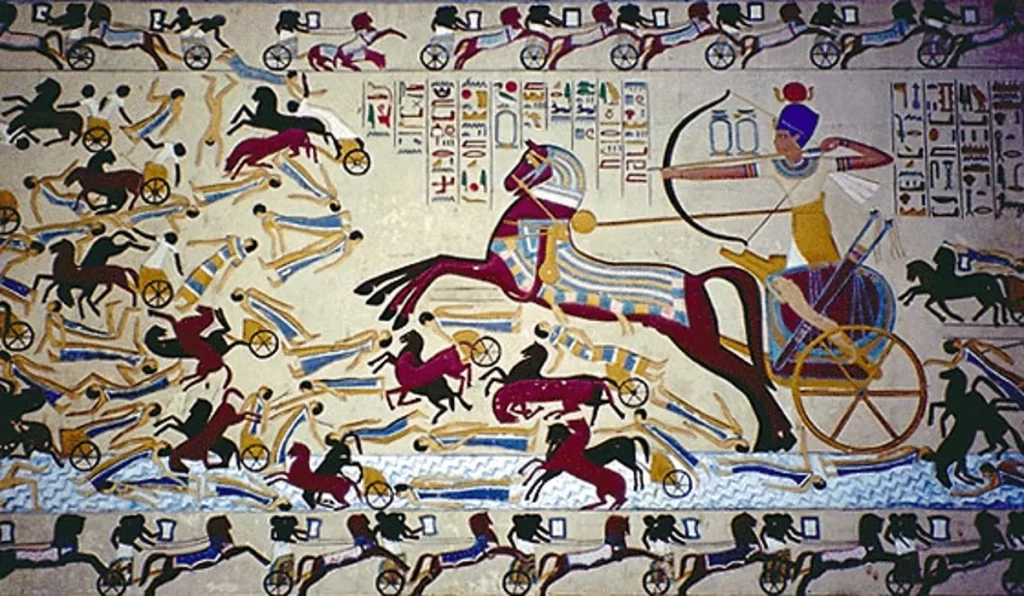
The Hyksos Invasion
[ez-toc]
Overview of The Hyksos Invasion
The Hyksos were a dynasty of Palestinian descent who governed northern Egypt during the 15th dynasty. They were a mixed Semitic people from west Asia (c.1630-1523 BCE). The term “Ruler of Foreign Lands” in Egyptian was “Hyksos.” The Hyksos invasion began around 1650 B.C., they created a sizable empire that persisted for a long time, and up until the 17th century, and many ancient Egyptian areas were ruled by Hyksos monarchs in Lower Egypt and along the Nile River. Because his brother Kamose desired to extend his rule to the north, the last king of the Theban seventeenth dynasty, “Ahmose,” launched a war of liberty and justice from his southern kingdom. As a result, he was assassinated by the Hyksos army. They were exceptionally skilled in battle and conflict since many immigrants from Hyksos brought new technology with them, including the compound bow, the horse, and the chariot, as well as other better metal weapons, including battle axes, and sophisticated fortification techniques. The most notable settlement was Avaris, a fortified camp in the northeastern delta, and they also attained a dominant position in trade with western Asia. However, all of that did not last for very long because, in their final days, they were unable to form an alliance with the ruler of Kush and many other people. They also worshipped the desert “God Seth,” whom they felt was connected with the Syrian god “Hadad.”
The 108-year hegemony of the Hyksos over Egypt was put to an end by King Ahmose, who was able to comprehend his foe’s strategies, adapt to their ways, and win the battle. He established the 18th dynasty and sailed to the start of ancient Egypt’s Golden Age as Egyptian strength was able to reach its zenith. He was able to restore Theban control over all of Egypt and reassert Egyptian dominance with the former provinces of Nubia and Canaan.
Ancient Egypt’s history was significantly altered by the Hyksos invasion in many ways, including Ahmose’s expansion of his empire into Syria from the north, Iraq from the east, and Sudan from the north, the importation of war spoils, and the imposition of taxes by the new kingdom. The Hittite empire, the Mitanni kingdom, and the Mesopotamia kingdom brought new religious, cultural, and technological developments to ancient Egypt, which attracted many foreign diplomats, merchants, and artisans. However, the most significant and important development was the creation of the first standing army. As the pharaohs still had greater temples than the gods, it also significantly altered religious life, as they began to feel more ready to share the honor with an old god. Since Amun-Ra was the single guardian of the Egyptian state and his status as the one and only supreme deity grew more spiritually and politically with the expansion of Egyptian strength, the monarchy and religious life in Egypt resembled monotheism, creating a new kingdom that was akin to a theocracy.



